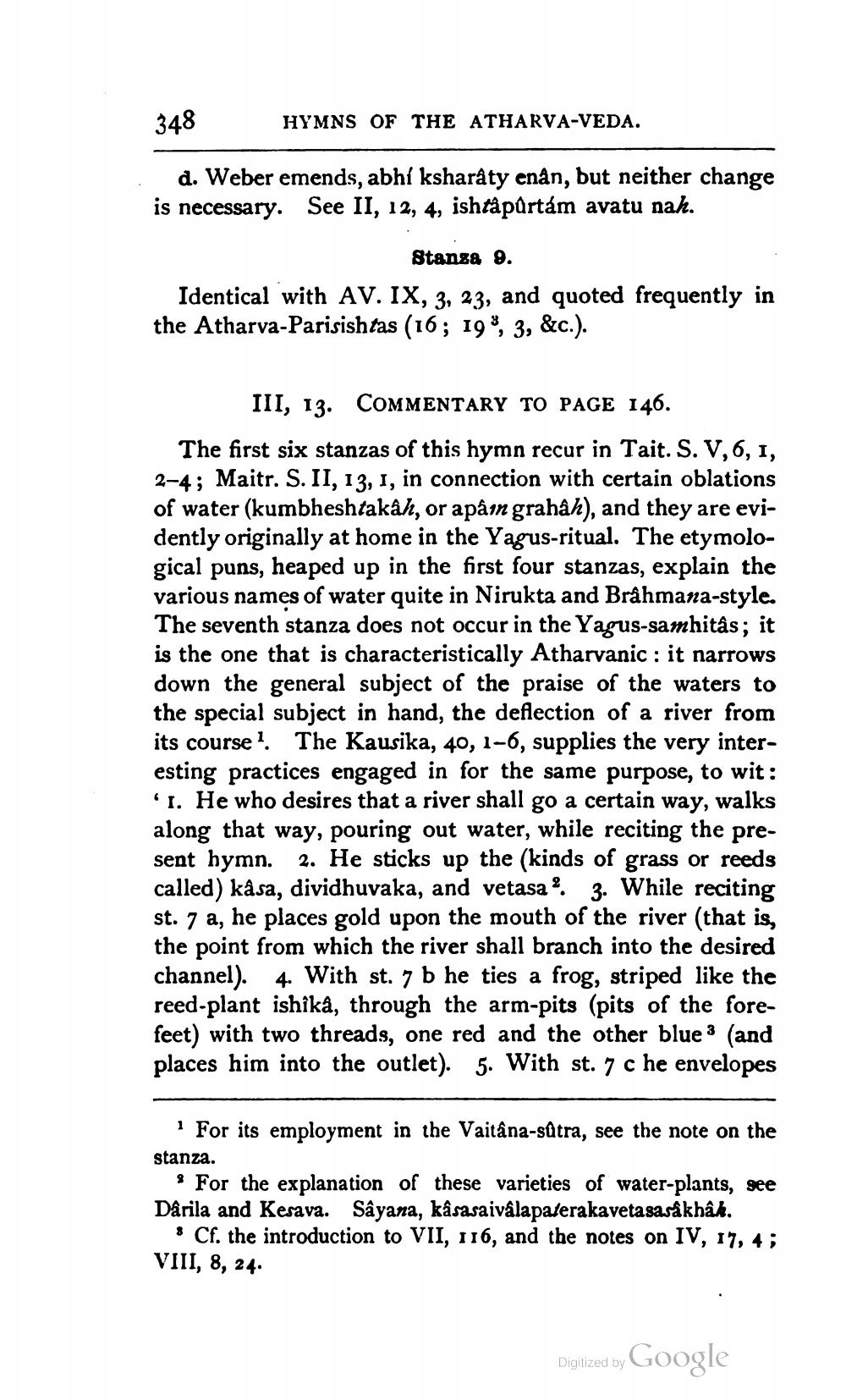________________
348
HYMNS OF THE ATHARVA-VEDA.
d. Weber emends, abhi ksharaty enän, but neither change is necessary. See II, 12, 4, ishtåpurtám avatu nah.
Stansa 9. Identical with AV. IX, 3, 23, and quoted frequently in the Atharva-Parisishtas (16; 198, 3, &c.).
III, 13. COMMENTARY TO PAGE 146. The first six stanzas of this hymn recur in Tait. S. V,6, 1, 2-4; Maitr. S. II, 13, 1, in connection with certain oblations of water (kumbheshtakâh, or apâin grahah), and they are evidently originally at home in the Yągus-ritual. The etymological puns, heaped up in the first four stanzas, explain the various names of water quite in Nirukta and Brâhmana-style. The seventh stanza does not occur in the Yagus-samhitas; it is the one that is characteristically Atharvanic:it narrows down the general subject of the praise of the waters to the special subject in hand, the deflection of a river from its course. The Kausika, 40, 1-6, supplies the very interesting practices engaged in for the same purpose, to wit: '1. He who desires that a river shall go a certain way, walks along that way, pouring out water, while reciting the present hymn. 2. He sticks up the (kinds of grass or reeds called) kâsa, dividhuvaka, and vetasa. 3. While reciting st. 7 a, he places gold upon the mouth of the river (that is, the point from which the river shall branch into the desired channel). 4. With st. 7 b he ties a frog, striped like the reed-plant ishika, through the arm-pits (pits of the forefeet) with two threads, one red and the other blue (and places him into the outlet). 5. With st. 7 c he envelopes
· For its employment in the Vaitâna-sđtra, see the note on the stanza.
. For the explanation of these varieties of water-plants, se Darila and Kesava. Sâyana, kâ sasaivalapalerakavetasasákhâk.
. Cf. the introduction to VII, 116, and the notes on IV, 17, 4; VIII, 8, 24.
Digized by Google
Digitized by




